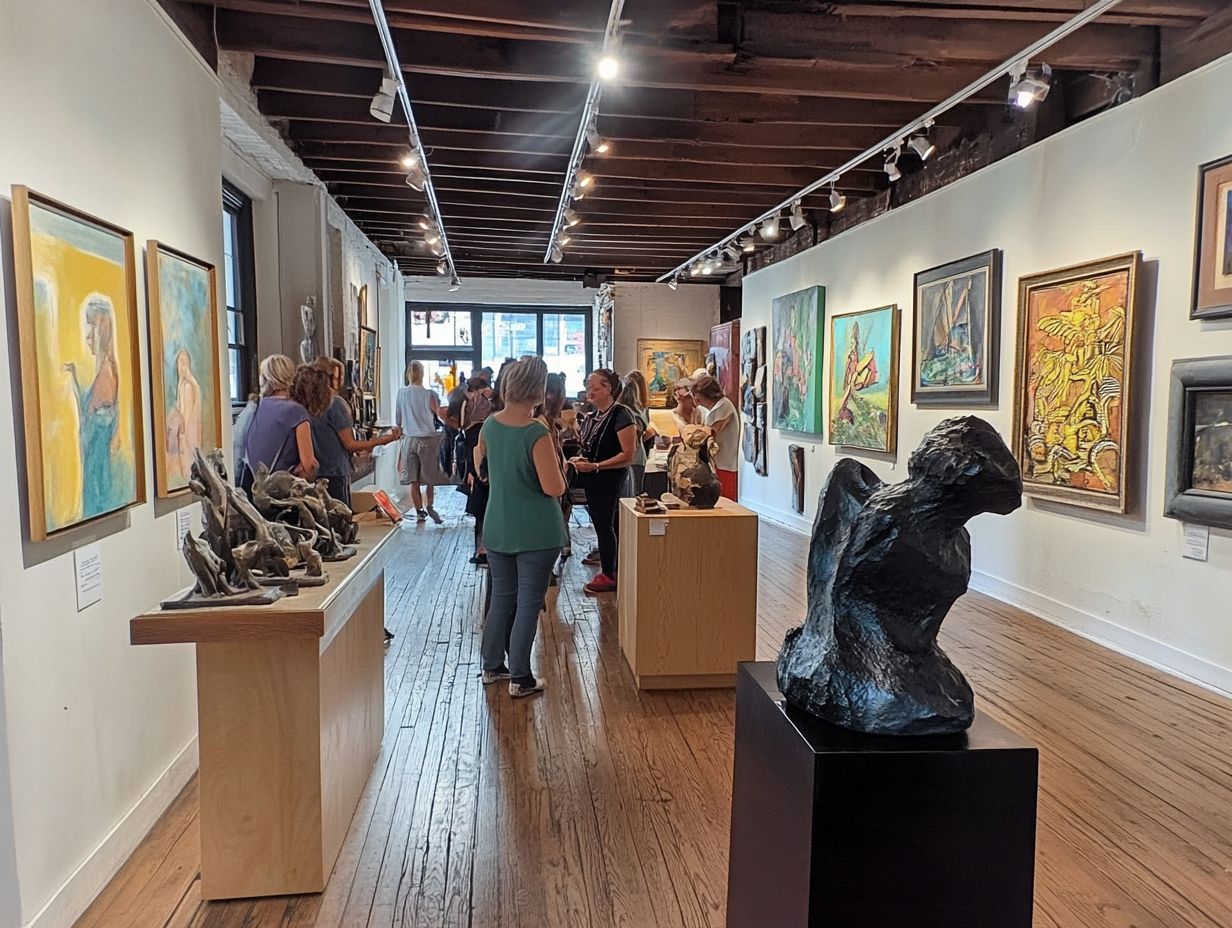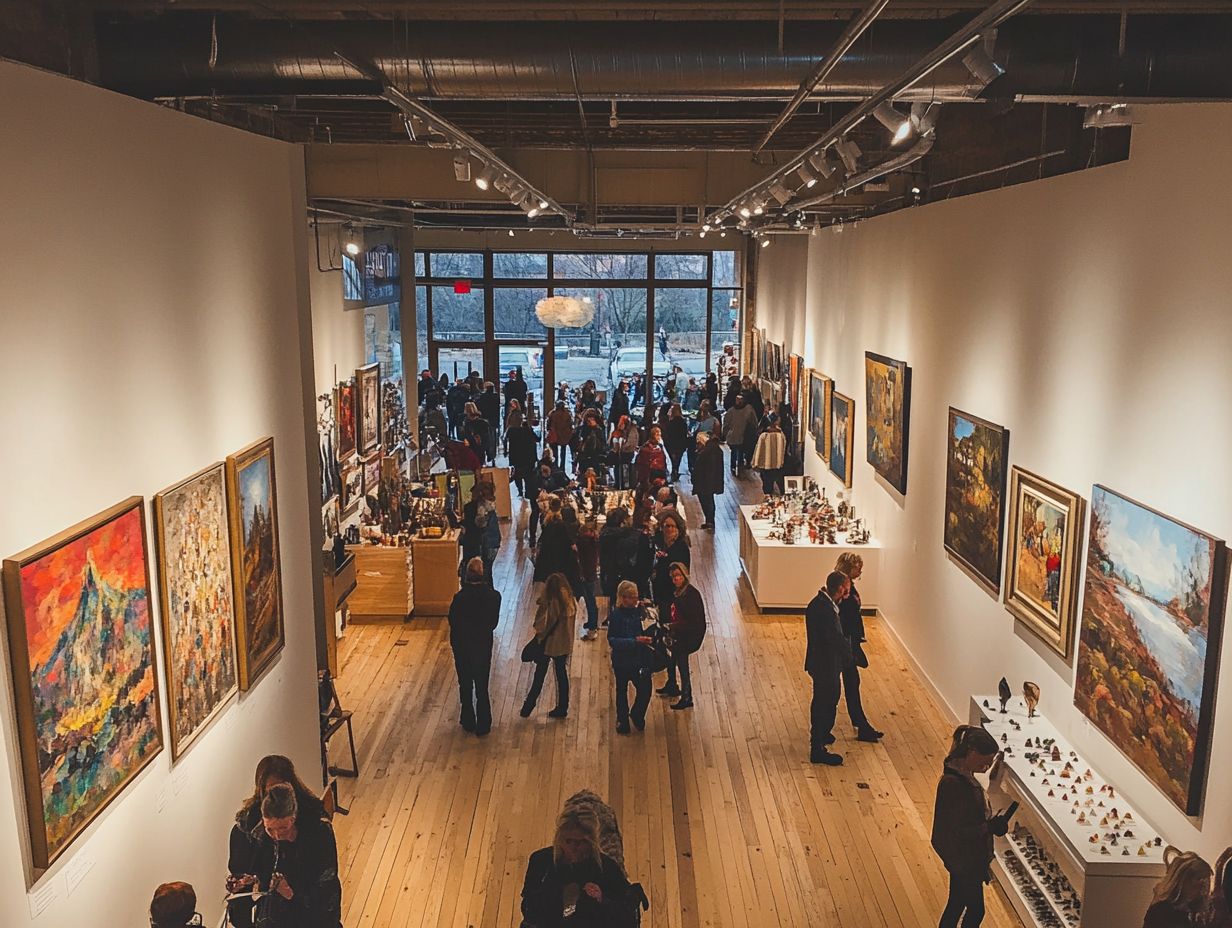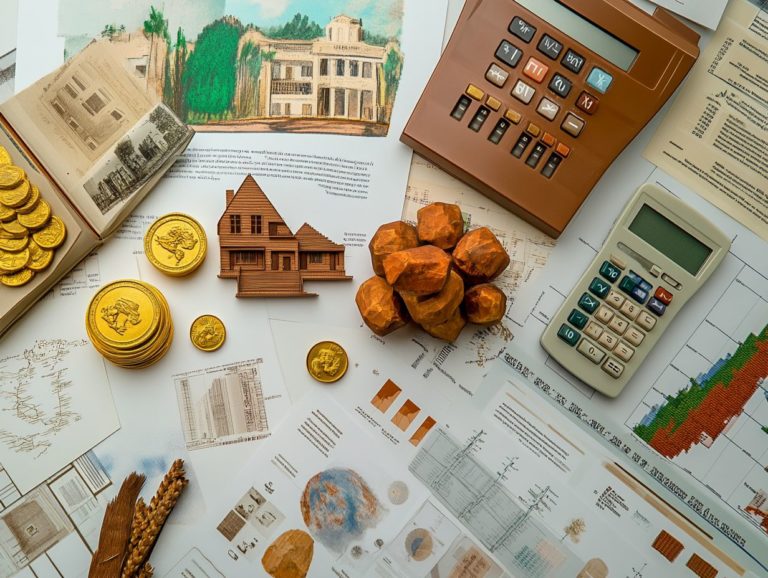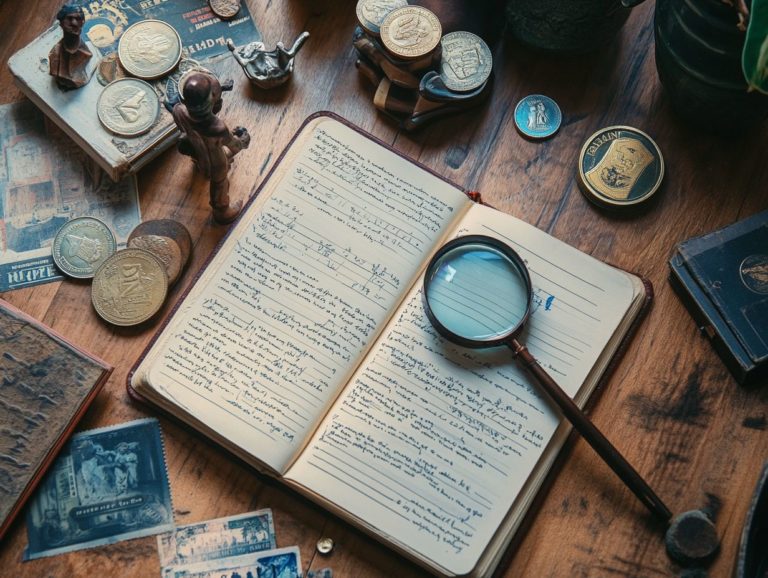Is Investing in Art a Good Idea?
Dive into the fascinating world of art investing! It s not just a way to beautify your space; it could also boost your financial future. Investing in art presents an intriguing opportunity for you to diversify your portfolio and explore unique asset classes.
While the allure of high returns can be compelling, investing in art has its own challenges and risks.
This article delves into the fundamentals of art investing, highlighting the benefits it offers while also addressing the challenges you may encounter along the way. It also examines other investment options, such as art funds and fractional ownership, empowering you to make informed decisions in this captivating market.
Contents
- Key Takeaways:
- Understanding Art as an Investment
- Benefits of Investing in Art
- Risks of Investing in Art
- Factors to Consider Before Investing in Art
- Alternative Ways to Invest in Art
- Frequently Asked Questions
- 1. Is investing in art a good idea for beginners?
- 2. Are there any risks involved in investing in art?
- 3. Can investing in art be profitable?
- 4. Is it necessary to have a large sum of money to invest in art?
- 5. Are there tax benefits to investing in art?
- 6. Can investing in art be a form of passive income?
Key Takeaways:

- Investing in art can provide potential for high returns, but it also comes with risks such as volatility and lack of liquidity.
- Before investing in art, it is important to consider market trends and expert opinions, as well as evaluate the artwork and artist.
- For those interested in art investing but lacking the resources, alternative options such as art funds and fractional ownership can provide a more accessible route.
Understanding Art as an Investment
Understanding art as an investment means recognizing its potential as a unique asset class that complements traditional investments. It also provides a safeguard against economic uncertainty.
Art has become a compelling choice for high net worth individuals seeking to diversify their portfolios, all while relishing the intrinsic beauty of original artworks, prints, and commissions.
By employing thoughtful strategies, you can successfully navigate the complexities of the art market. This will optimize your returns and protect your wealth through both capital appreciation and the pleasure of cultural engagement.
The Basics of Art Investing
Understanding the fundamentals of art investing requires you to grasp the intricacies of art as a collectible asset. This includes recognizing its inherent risks and keeping an eye on market trends.
Appreciating the critical importance of authenticity in preserving the value of artworks is essential.
Navigating the delicate balance between supply and demand is crucial. Certain styles or artists may experience sudden surges in popularity, dramatically impacting their valuations.
As a collector, your preferences and acquisitions play a pivotal role in shaping the market. This can set trends that influence both emerging artists and established figures alike.
To make informed decisions, thorough research is critical. Evaluating provenance, or the history of ownership of the artwork, historical significance, and the condition of pieces can significantly enhance your investment strategy.
Ultimately, art investing demands a blend of passion, expertise, and a keen eye for future value. This makes it a captivating yet challenging pursuit.
Benefits of Investing in Art
Investing in art offers many advantages, particularly if you’re seeking to enhance your financial portfolio.
Not only does it offer the potential for substantial returns, but it also provides a unique opportunity for diversification. This can help mitigate risk while simultaneously improving your overall performance.
Potential for High Returns
The potential for high returns in art investing is a compelling reason for you to explore the art market. However, it’s important to consider understanding the risks of art investments. Original pieces from renowned artists often appreciate significantly over time, especially when you acquire them at auctions.
Research indicates that certain artworks, like those by Picasso or Basquiat, haven t just retained their value they ve, in some instances, skyrocketed.
Take, for example, a Picasso painting that sold in 2015 for an astounding $179 million, reflecting an impressive 8% annual increase in the global art market over the past 25 years.
Similarly, a Basquiat piece auctioned for $110.5 million in 2017 showcases the rising trend of contemporary art as a solid investment opportunity. This historical performance highlights the necessity of understanding market dynamics and the evolving preferences of collectors, as these factors can profoundly impact your return on investment.
Diversification of Portfolio

Diversifying your portfolio through art investing can significantly elevate your wealth management strategy. Art tends to behave differently than traditional asset classes like stocks and bonds, acting as a safe option during economic downturns.
By incorporating art into your investment portfolio, you can reduce risk while exploring unique opportunities for appreciation that remain uncorrelated to market fluctuations.
The trend of investing in art underscores not only its aesthetic value but also its potential for capital growth over time.
Art professionals, such as curators and advisors, are invaluable resources for collectors. They help you navigate the complexities of the art market, ensuring your decisions are informed and aligned with your individual financial goals.
For those seeking to craft a robust and dynamic investment strategy, embracing art as part of a diversified portfolio can pave the way for long-term financial stability.
Risks of Investing in Art
Art investing can be thrilling, especially with the promise of high returns! However, it s essential for you to remain vigilant about the risks involved.
These include market volatility, lack of liquidity, and the challenges that come with verifying the authenticity of artworks all of which can significantly impact their value over time.
Volatility and Lack of Liquidity
The volatility of the art market and its lack of liquidity can present considerable challenges for you as an investor. Prices can swing dramatically, influenced by trends, demand, and broader economic conditions.
This unpredictability is very different from traditional investments, where market behaviors tend to adhere to clearer and more predictable patterns. If you re contemplating diversifying your portfolio with art, understanding how these factors interact is essential.
Unlike traditional investments, which usually benefit from established metrics and regulatory protections, the art market exists in a realm characterized by personal taste, which can make it more unpredictable.
It s a dual-edged sword, presenting both opportunity and risk.
Factors to Consider Before Investing in Art
Before you invest in art, take a moment to consider these key factors!
Take a closer look at current market trends, seek expert opinions, and evaluate both the artwork and the artist behind it. These elements can significantly influence the success of your investment.
Market Trends and Expert Opinions
Dive into market trends and seek expert opinions to make your investment count! Understanding market trends and seeking expert advice is crucial for art investors like you, as they offer valuable insights into the valuation and potential future appreciation of various artists and artworks.
By analyzing recent patterns such as the rising popularity of contemporary artists or the resurgence of classical pieces you can make more informed choices in your investment strategy.
For instance, the sudden spike in auction prices for works by emerging artists has certainly caught the attention of seasoned collectors, prompting them to rethink their portfolios.
Experts are your allies in navigating the complexities of the art market, helping you unravel the intricacies of supply and demand.
The fluid nature of this market emphasizes why consulting knowledgeable professionals is essential for maximizing your investments while minimizing risks.
Start exploring the vibrant world of art investment today and watch your portfolio flourish!
Evaluating the Artwork and Artist

Evaluating the artwork and artist is an essential step in your investment journey. Factors like authenticity, provenance, and historical significance can significantly impact market value and future appreciation.
Examine an artist’s exhibition history and accolades such as awards or notable gallery shows to gain valuable insight into their reputation within the art community. Pay attention to market trends; understanding which genres are currently in demand can greatly enhance your chances of investment success.
Analyze auction results of similar pieces to understand where an artist’s work stands in relation to their peers. Take Banksy, for example; his works have soared in value due to their cultural relevance and rarity.
This comprehensive evaluation blends both qualitative and quantitative measures, allowing you to assess an artwork’s potential in the marketplace.
Alternative Ways to Invest in Art
Exploring alternative avenues for investing in art opens a world of possibilities for those who may lack the capital for original pieces.
Consider art funds and fractional ownership as viable options. Investing in high-quality prints provides a diverse array of choices.
Each of these methods allows you to engage with the art market without the hefty price tag, making art investment accessible and enjoyable.
Art Funds and Fractional Ownership
Art funds and fractional ownership present innovative investment avenues. They allow you to engage in the art market without the hefty price tag of acquiring entire pieces. This approach facilitates diversification in your investment portfolio.
By pooling resources, these structures enable a broader array of investors to access high-value artworks that might otherwise be financially out of reach. Operating within clear legal rules, these art funds can work transparently while navigating regulatory complexities.
This ensures legitimacy and instills confidence in you as an investor, letting you enjoy the potential appreciation of art pieces in a more manageable way.
Fractional ownership nurtures a sense of community, enabling art enthusiasts and investors to share in the journey of appreciation, ultimately democratizing art investing for everyone involved.
Frequently Asked Questions
1. Is investing in art a good idea for beginners?
Yes! Investing in art offers beginners a chance to grow and diversify their portfolio.
2. Are there any risks involved in investing in art?

Yes, investing in art carries risks. The value can fluctuate based on trends, reputation, and condition.
3. Can investing in art be profitable?
Absolutely! Art can gain value over time, especially as artists become more recognized.
4. Is it necessary to have a large sum of money to invest in art?
No, you don’t need a lot of money. Options like art funds or prints allow you to start small.
5. Are there tax benefits to investing in art?
Yes, investing in art can offer tax benefits. Check with a tax professional for details in your area.
Ready to explore art investing? Start your journey today!
6. Can investing in art be a form of passive income?
Yes, investing in art can earn you easy income! Renting out your art or loaning pieces to exhibitions opens a path to regular earnings.
This method needs careful management and may not always provide steady income.






